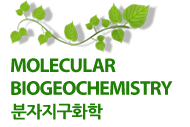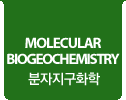

Introduction
- Environmental Molecular Ecology
Over the past 40 years, the utilization of molecular biological techniques involving the use of indicator species has revolutionized ecological research. The motivation behind this research is to assess the genetic monitoring of indicator species of arsenic-contaminated ponds, marine, sediments, streams, tailings, and waters, and for the application of these findings to restoration management. Scientists have also used these indicator species in molecular ecology management and ecosystem health assessment.
Research Interests
Arsenic(heavy metal) molecular biogeochemistry is the study of As-mobile and mechanisms factors that control or influence that mine ecosystem ecology. Arsenic researches in the As-biogeochemistry at the South Korea Field my focuses on the biogeochemical cycling of detoxification and bioremediation wetlands. Wetland ecology bacteria, ferns, and salamander in soils, sediments, water are typically anoxic (no oxygen) and therefore are home to many anaerobic microbes. The delivery of oxygen to wetland soils and sediments is possible at the soil-air and soil-water interfaces. Furthermore, oxygen loss from plant roots can provide a source of oxygen to subsurface soils. Because of the close proximity of aerobic and anaerobic zones, wetlands are biogeochemical hot-spots where many elements cycle between oxidized and reduced forms. To know the further experimental themes combines molecular ecology using indicator species with originality Ecological Genetics assessments of ecological restoration using the indicator species has become a major strategy in the biogeochemical engineering of weathering bacteria, biogeochemistry of wetland ecological, biological resources, eco-parks, eco-toilets, ecological risk assessment and desalination for marine pollution indicators of many arsenic(heavy metal)-contaminated environments areas.
Molecular Biogeochemistry
This research purpose all aspects of molecular biogeochemistry from their pathways of phenomenon-restoration, ecological damage patterns with regard to phylogeny and physiology, occurrence in nature organisms and environments, genetic pathways, analytical techniques and the occurrence of molecular screen through the geological survey. Wetlands, Arsenic Resistant System Bacteria, Salamander, Ferns, and eco-evaluation of desalination Etc.
Including:
Ars Bacteria, Ferns, Fern-microbial, Salamander, Wetlands, Marine, Ancient Giguryeo area, Baekducan ecosystem, Duman river, Buerhatong river, Freezo-dried Burial, Drink Water Monitoring, GenBank Database, Eco-Park, Eco-Toilets Culture, Environmental Green Energy, Ecological Genetics Engineering, Coal-gold Mine, Ecological Indicators, Seawater Desalination, Biocement & Self-constructing foundation, Earth and Space Microbial Ecology.
Integrated Assessment of Carcinogenesis (Toxicity/Risk) and Ecological Indicators for Contaminated Ecosystem based on Molecular Biology / Research and Development Services.




















